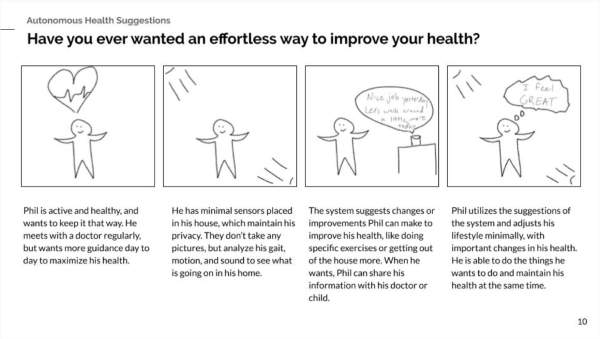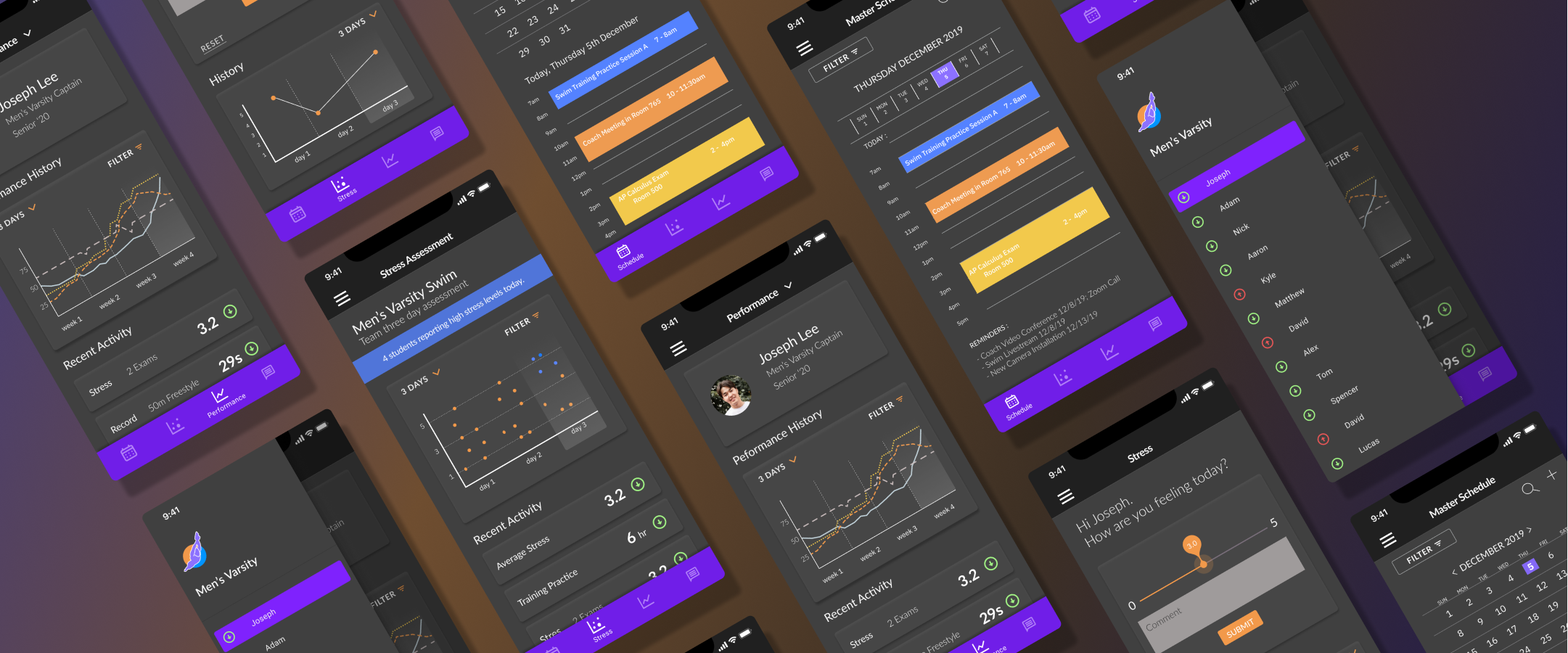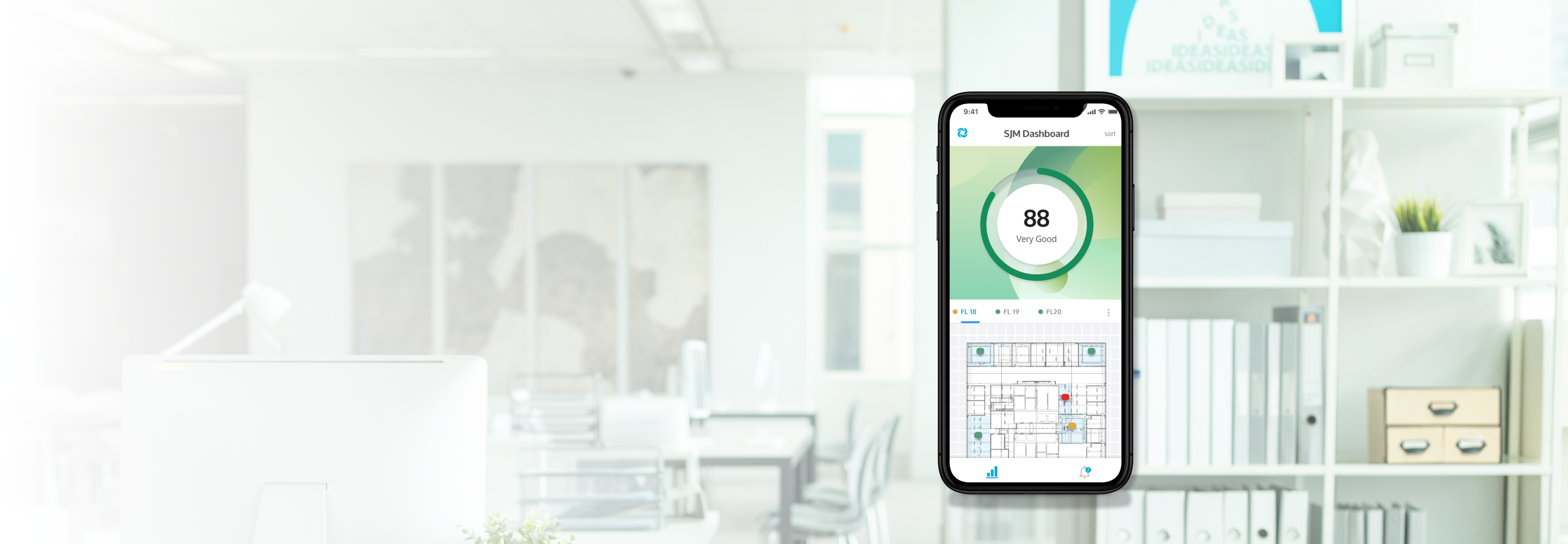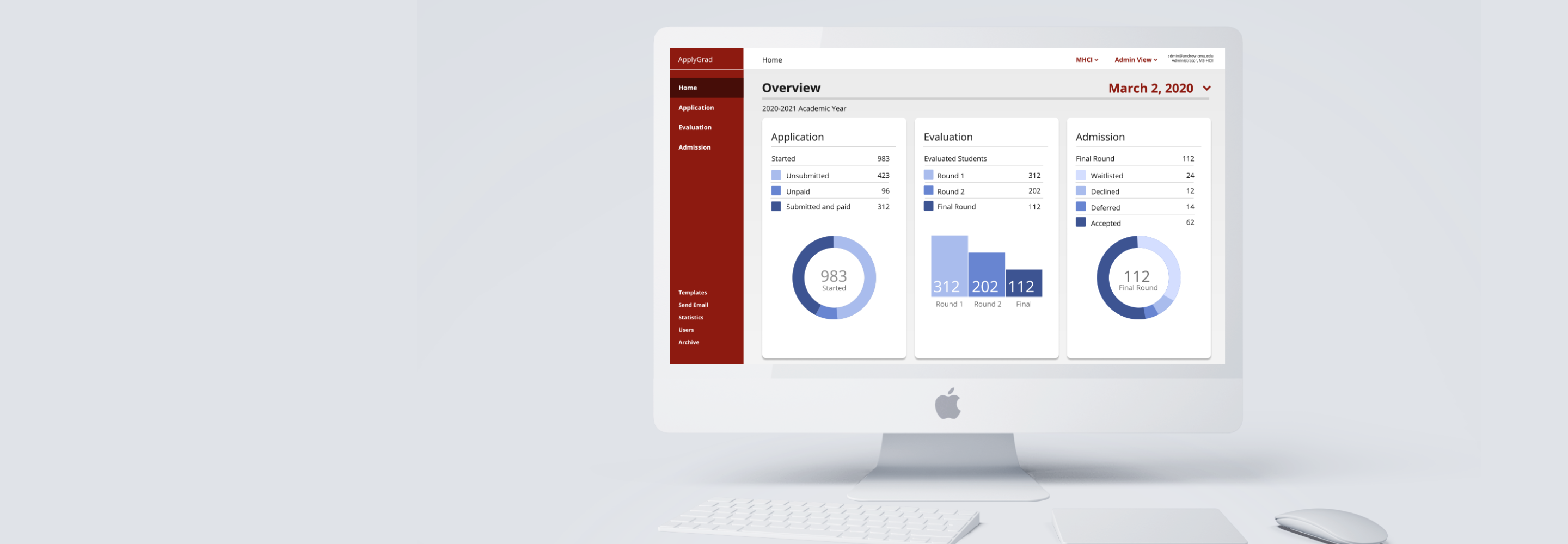Hula
Improving the aging experience through
multi-generational connection
[UX Research, UX Design]
TEAM
Amrita Sakhrani, Diana Zhan, Katie Johnstone, Marc Dubin & Missy Chen
TIMELINE
Jan 20202 - Aug 2020
ROLE
UX Research Lead (Recruiting participants, research plans, leading synthesis sessions & leading usability testing)
CHALLENGE
For the first time in history in the U.S. there will be more people above the aged of 65 than there are under 18. An expanding aging population also drives and expanding market as more aging adults demand a healthy, independent and fulfilling retirement. We worked alongside Nationwide Innovation and Nationwide Ventures to identify worth solving pain points to improve the aging in place experience.
SOLUTION
A family communication platform to connect aging adults to their loved ones, and enables family members to unobtrusively monitor the health and safety of their aging parents through short videos. Watch the product promo video here
IMPACT
Drives significant value for Nationwide as a leader in aging in place solutions and creates value for stakeholders in the Silver Economy.
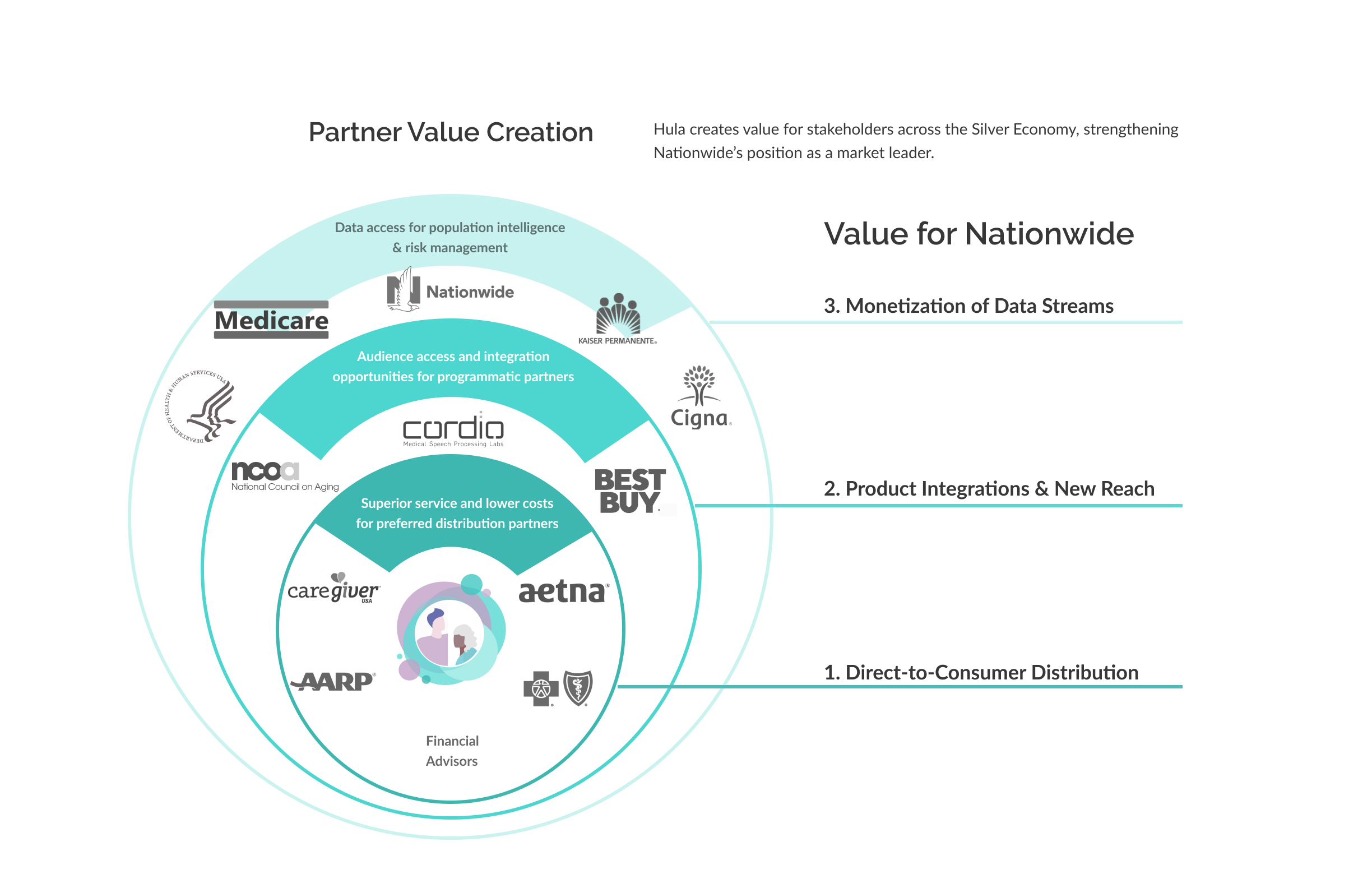
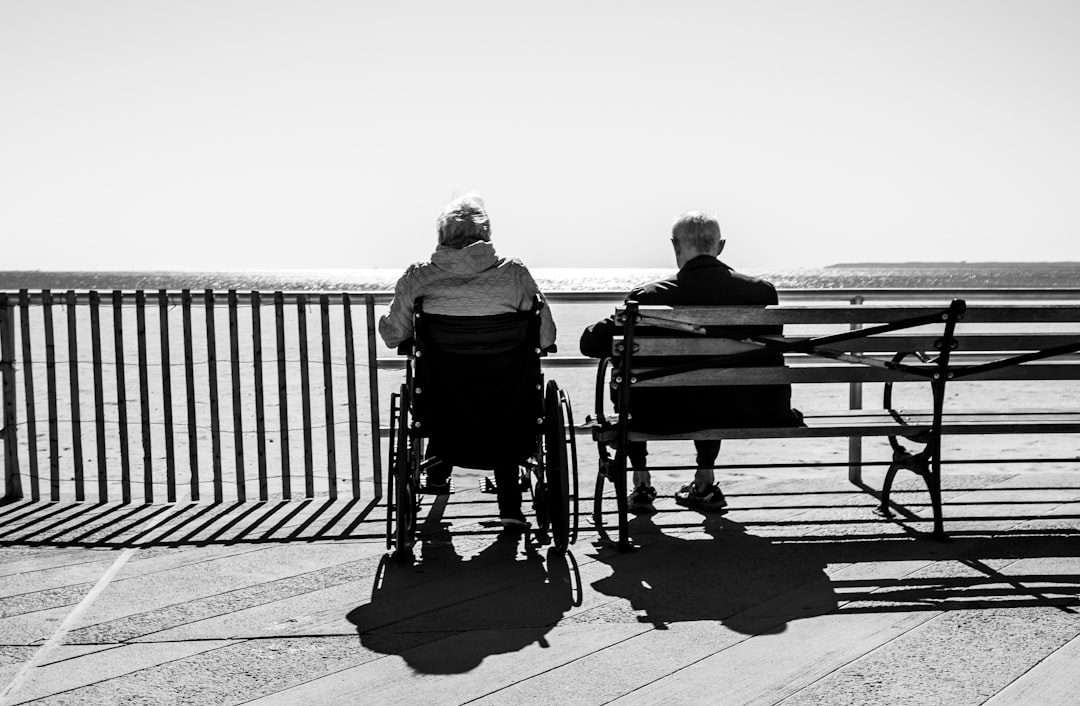
GOAL
How might we help aging adults and their support networks recognize and address gradual decline in health?
RESEARCH
We used a carousel activity to map the problem space with our client in our kick-off meeting
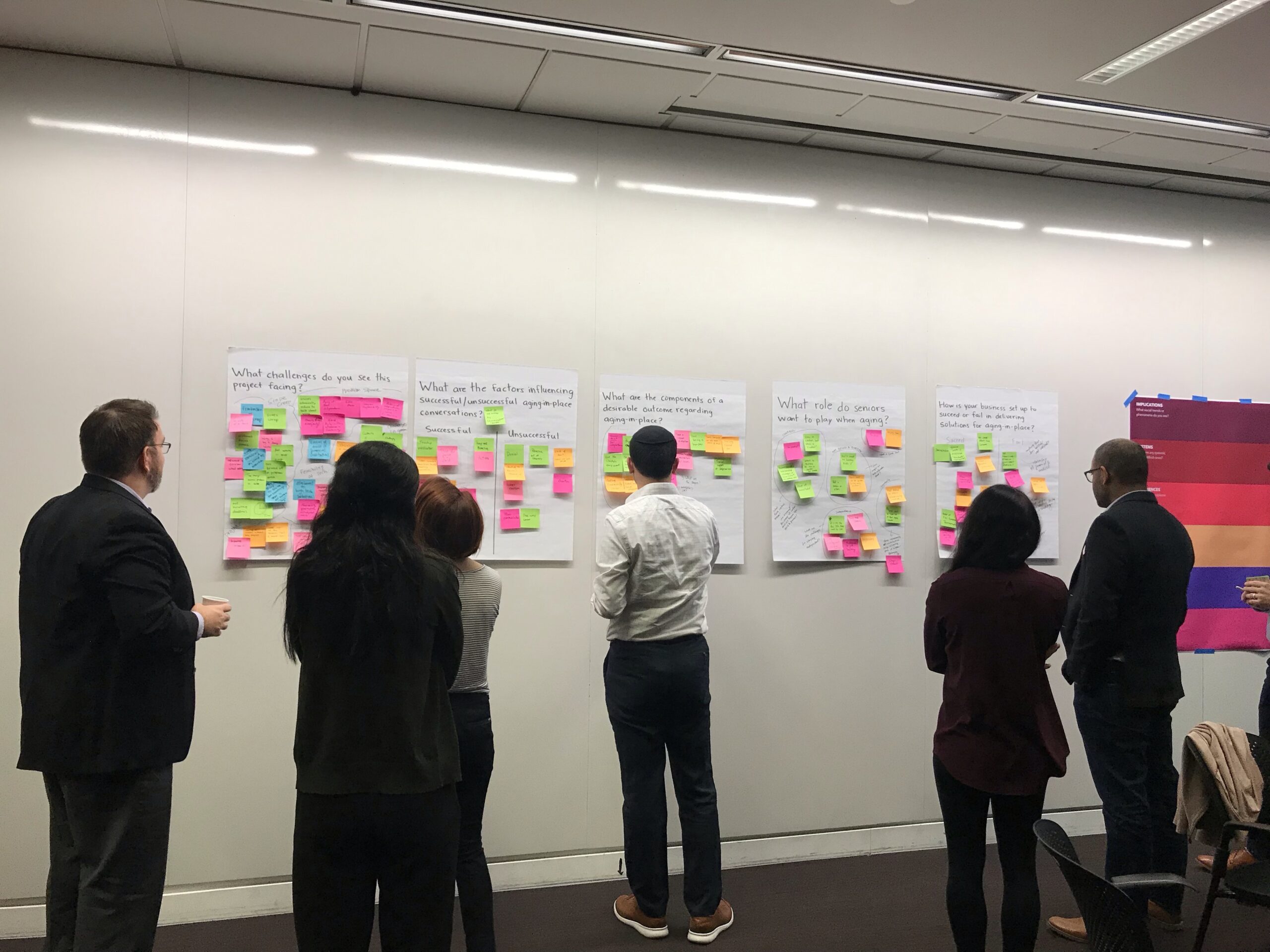
We used 7 different Research Methodologies throughout the project
We spoke to a total of 101 participants throughout the 8 months. The participant pool was diverse, covering individuals between the age of 30 - 93 across a wide spectrum of socio-economic backgrounds. We recruited participants from senior centers, CMU's OSHER (a lifetime learning program for retired or semi-retired individuals), and platforms such as UserTesing.com and UserInterviews.com - enabling us to reach a wide range of people. Due to the pandemic, the second half of the project all sessions were conducted remotely.
1. Landscape Research (Reading relevant scientific literature, and consulted experts in persuasive & game design)
2. Nationwide Materials (Studying existing research into the space)
3. User Interviews (Semi-structured interviews with both groups of users)
4. Speed Dating (Conducted a series of speed dating sessions with storyboards depicting a variety of scenarios that represented needs around aging-in-place and assessed how participants resonated with them)
5. Collage Activity (Helped us to understand underlying emotions, we asked participants to select images and words that represented how they felt about connecting with a loved one from afar)
6. Directed Storytelling (Helped to understand unmet needs and functional gaps, we asked participants to share concrete examples of the last time they experienced issues connecting with loved ones from afar)
7. Survey (To help validate hypotheses and insights from our qualitative research, we gathered quantitative data around attitudes and desires around the remote monitoring experience)
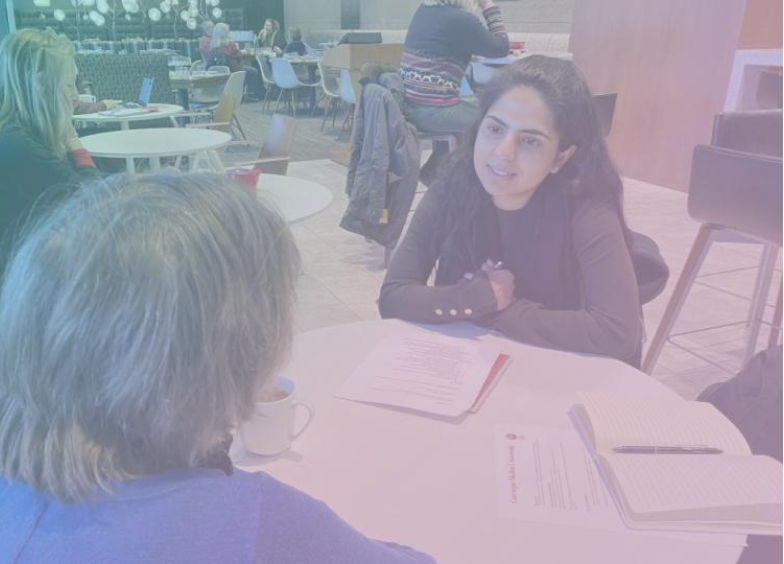
Conducting a Semi-Structured Interview with a local in Pittsburgh
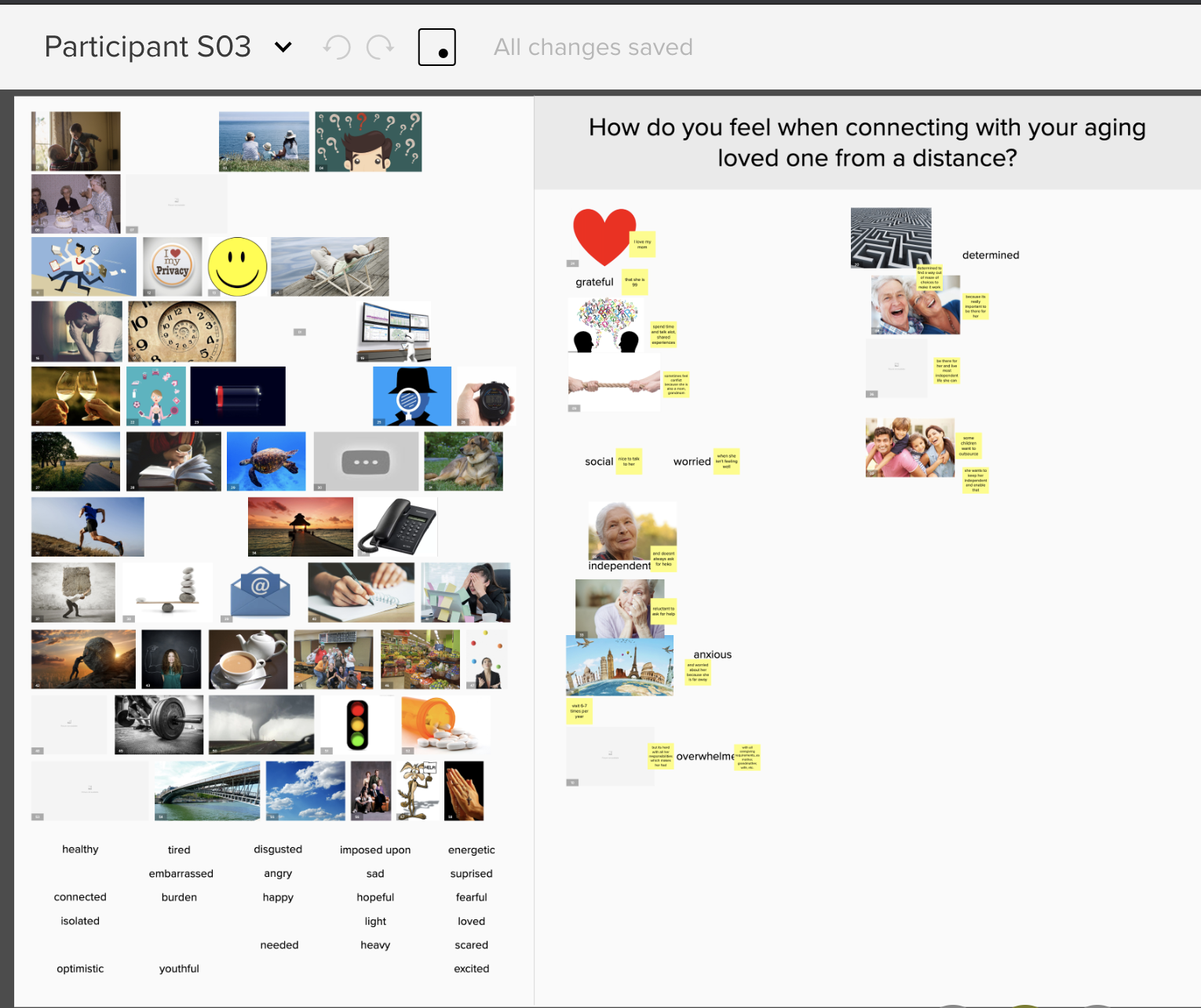
Conducting a remote Collage Activity with a participant using Mural
Defining our Customers
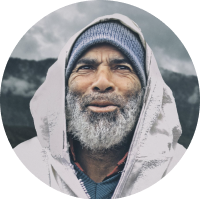
Aging Adults
Age: 57 - 92
Health Status: Healthy - managed chronic issues
Living Status: Independent by themselves or with a spouse/partner
Children: Adult children who live afar
"It's been five years since I entered retirement, and although I can't move as fast, i'm not ready for the rocking chair yet. Without a work schedule, I want to have something each day that I love doing. My daughter Stacy calls me every week to see how I'm doing and I can't wait to hear how my grandaughter Sophie is doing".

Adult Children
Age: 30 - 69
Caregiving Role: Concerned but not directly responsible.
Living Status: Don't live in the same household as their aging parents.
Parents: Healthy - managed chronic issues
"It's hard to find free time as a middle school teacher and raising my two children. It's overwhelming when I also worry about my aging father's health and how he's feeling. I feel responsible for his well-being even though I live in another city - I mean who else will look after him? I try my best to keep in touch through weekly phone calls but feel frustrated when he doesn't openly share more about how he's doing".
Our customer journey map helped us empathize with aging adults and their fear of deteriorating health
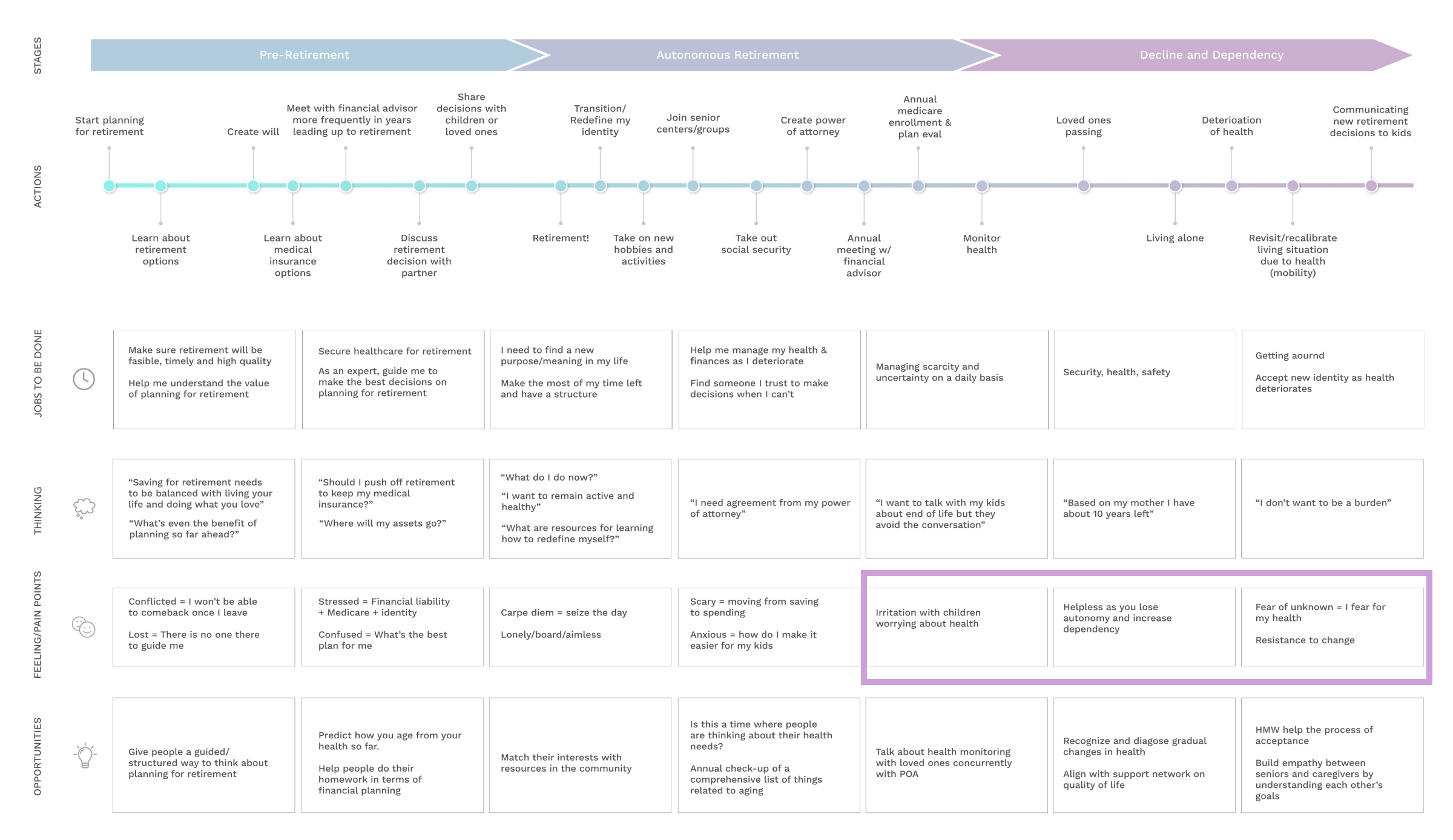
Key Takeways:
1. As they age, aging adults have a worry of “losing themselves”. Aging adults often sought continued intellectual challenge in retirement, and expressed the fear of losing cognitive function. This may also be tied to a fear of common mental diseases that afflict the older population, such as dementia and alzheimer’s.
2. Aging adults have to create a new sense of identity in retirement. Careers have heavily defined a person, so during retirement a lot of aging adults ask themselves: who will I be and how will I find a sense of identity now? “I agonized for three years before I retired, not knowing if it was the right decision” - an aging adult’s answer when asked how the transition to retirement was. Aging adults also expressed fear of losing social recognition that came with their former work identities, as well as needing a “wind down” period. Interestingly, women we spoke to expressed that their husbands often had a harder time leaving work due to the central focus in their lives.
Through multiple affinity diagrams and clusters we were able to uncover barriers preventing a successful aging in place

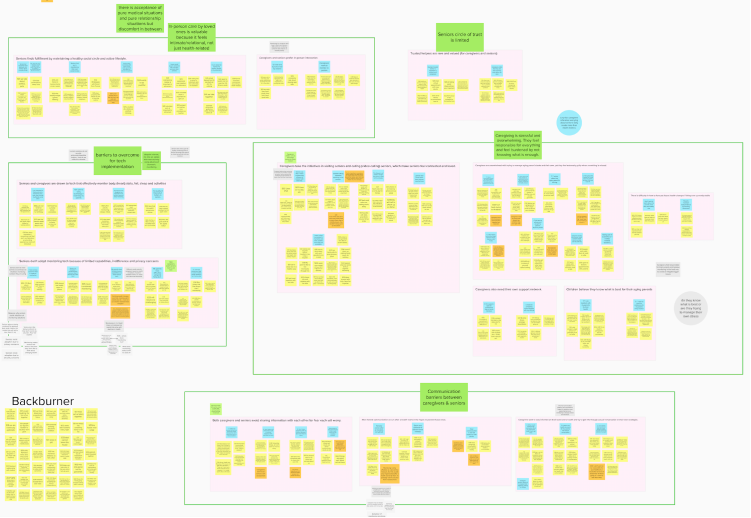
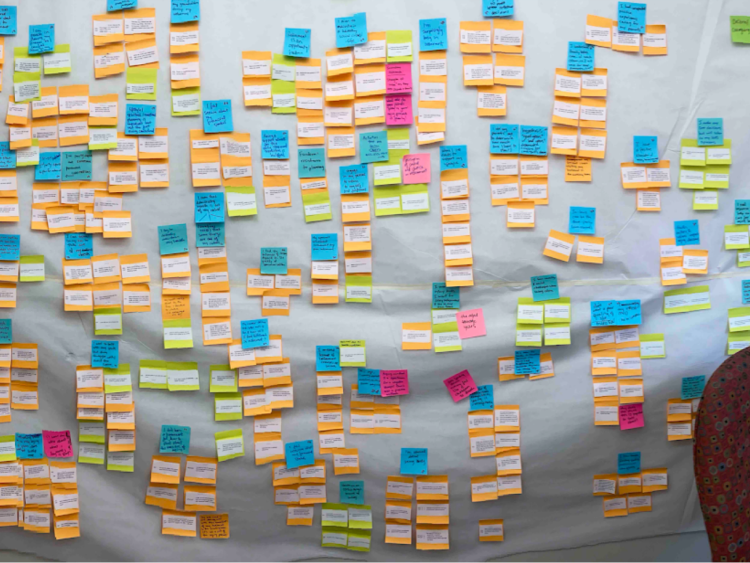
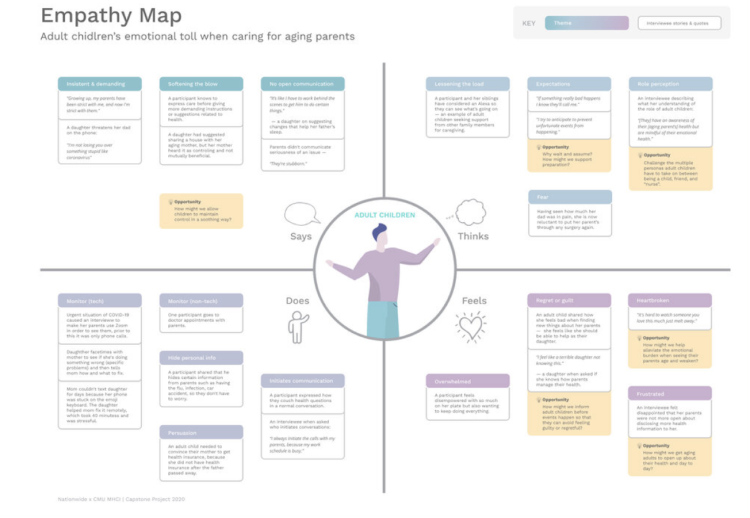
From our synthesis sessions, we were able to derive 4 key research insights

“It’s hard to find the right balance with all my caregiving responsibilities”

INSIGHT 1: It's a weighty juggling act
Adult children juggle their own responsibilities and different roles in trying to care for their aging parent’s wellbeing. They adopt three different roles: a child, a friend and a nurse.

“My parents were always strict with me and now I’m strict with them”
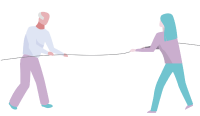
INSIGHT 2: Control is a tug of war
Aging adults and their adult children experience a shift in power dynamics, as both try to play the role of the “parent”.

“I’d rather be positive with my kids... they already have enough worry with [their] father”
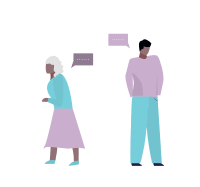
INSIGHT 3: A bilateral lack of communication
Both aging adults and adult children withhold sharing information resulting in a strained communication channel, tensions, and resentment.
INSIGHT 4: A unilateral monitoring experience
Current solutions do not provide value to aging adults; they are mostly unilateral experiences - monitoring aging adults for the benefit of adult children, and are weakly adopted.
Reframing the problem:
How might we move from one-sided “monitoring” to a collaborative partnership?

We created a matrix to map out current solutions and identify the gap in the marker for design that catered to user's emotional needs.
We found a market opportunity to meet needs of both parties.
Through a competitive analysis we identified a potential market opportunity.
We tested 10 conceptual prototypes ranging from smart home systems to virtual assistants to a legacy management platform
This was tested with 15 participants through two rounds, and during the interviews, we collected Likert scale ratings across:
- Need resonance
- Comfort: data collection
- Comfort: data sharing
- Interest

Key Takeway:
Family Is The Way In.
1. Aging Adults don’t want to feel like they are under a microscope
2. Grandchildren are a key motivation for aging adults to share information
3. Adult Children have a fear of missing out on something in their parent’s health
DESIGN
Design Opportunity
Video challenges allow adult children to unobtrusively monitor the health of their aging parents, while aging parents feel more connected to their grandchildren. Family members can connect through short video challenges, engaging in completely novel ways to create new memories. These recordings will also serve as raw materials for voice and video analysis to detect changes in key health determinants like mood, cognitive health, and physical pain.
We created the information architecture of our family engagement platform
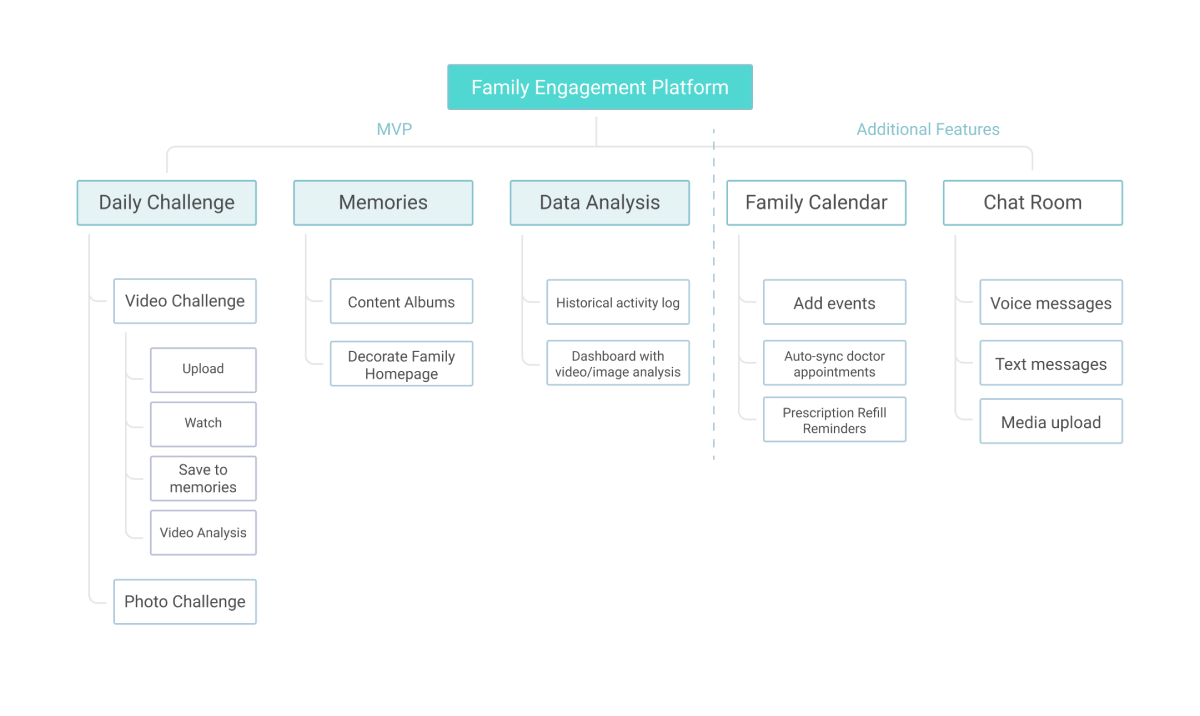
We designed wireframes based on challenges and being able to have a health analysis dashboard

We designed wireframes based on challenges and being able to have a health analysis dashboard
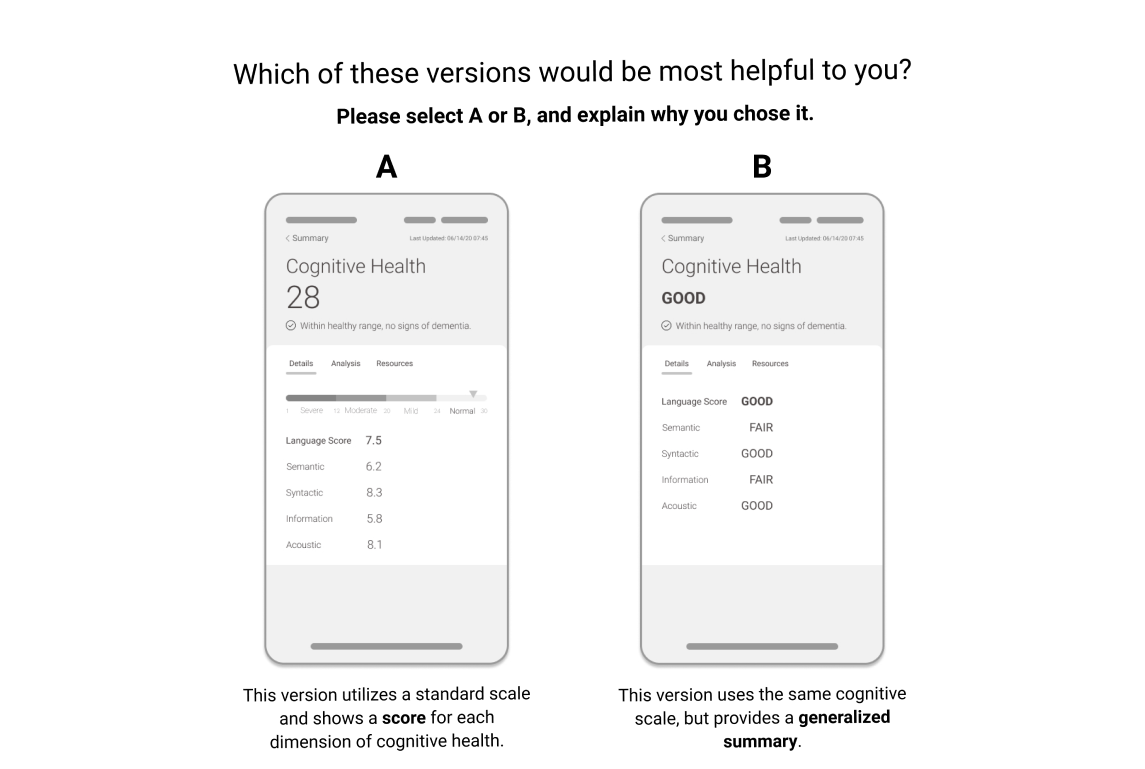
Preference for numerical score over general summary
We tested two different versions of the health dashboard: one with a numerical score and the other with a general summary
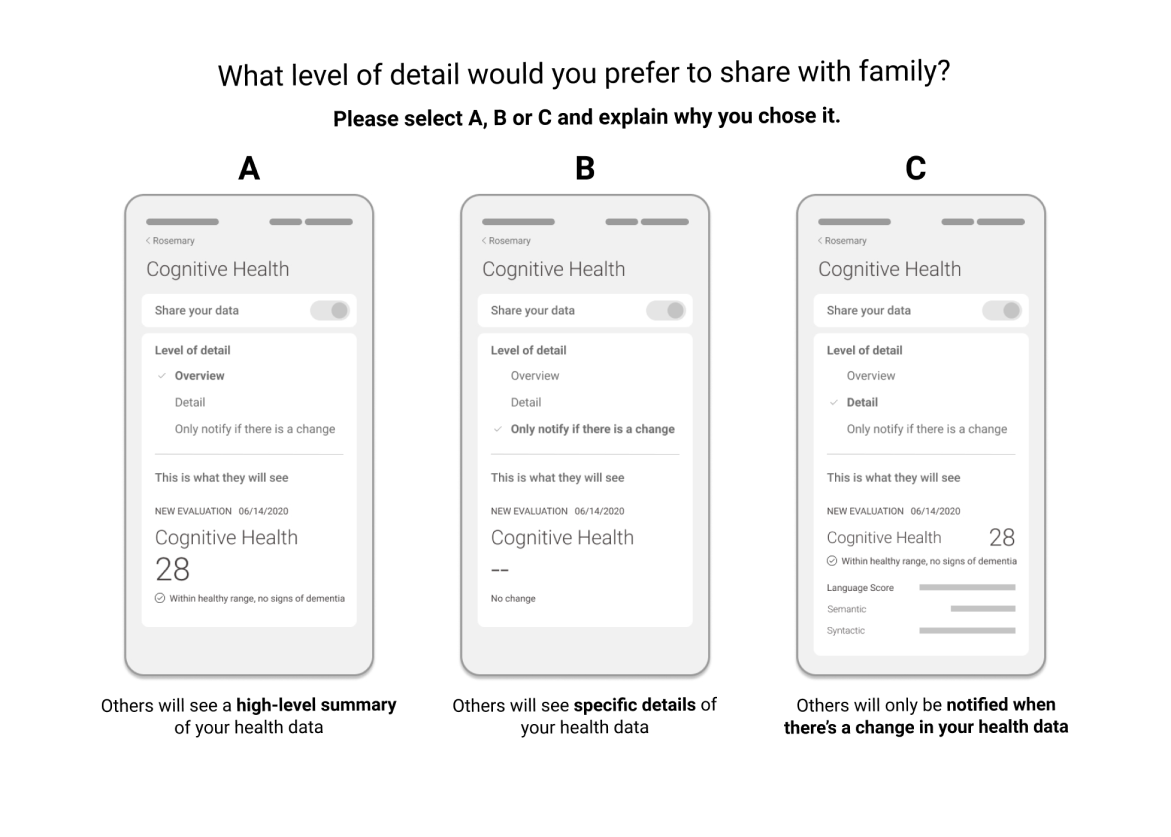
Uncertainty about how data was collected and shared
We showed how sharing preferences could be changes and different variations of detail
We developed a set of guiding design principles, to lead our design concept address the needs we gathered during research
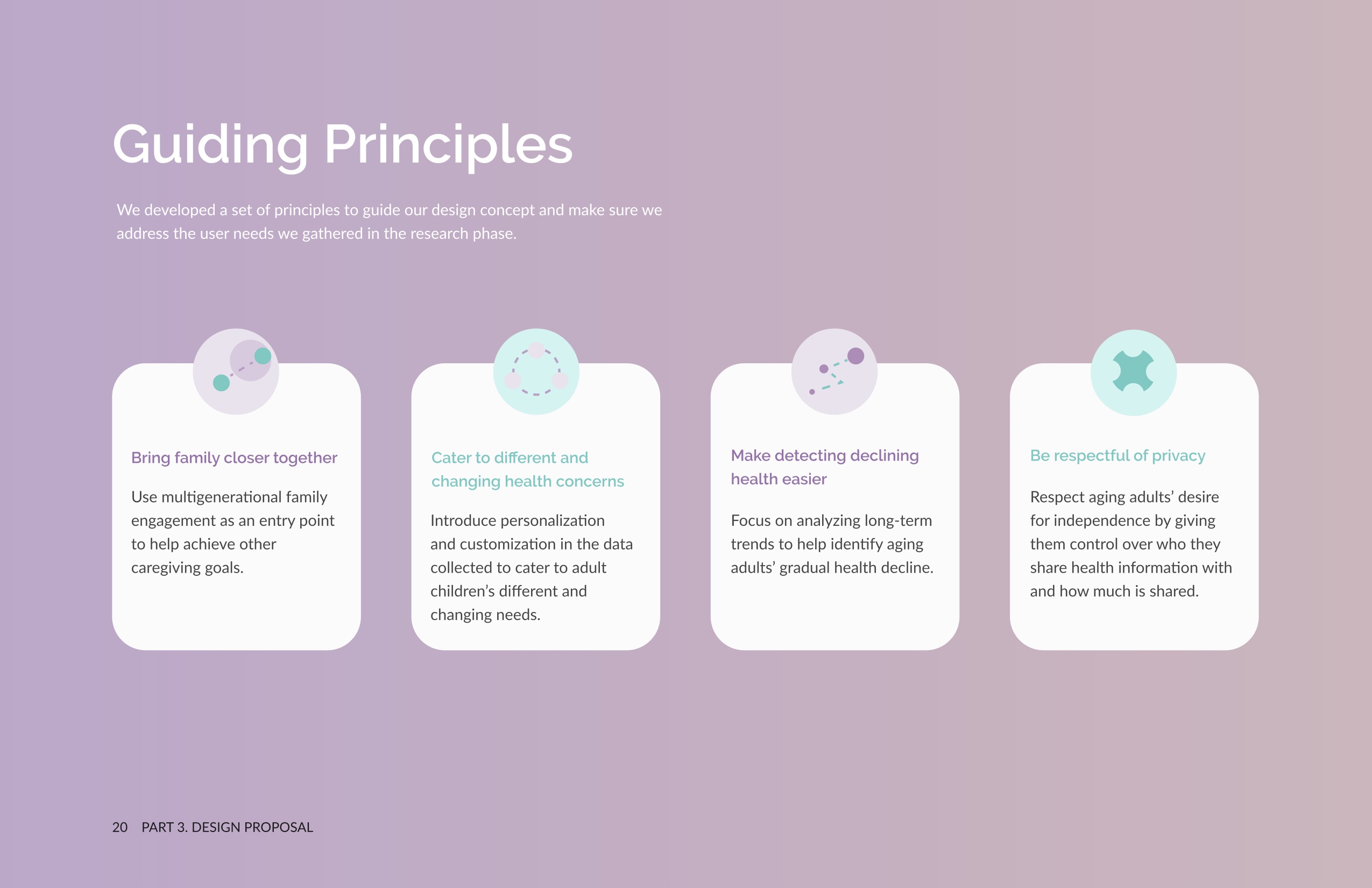
After 3 rounds of usability testing, we validated that Adult Children appreciated tracking their aging parent’s cognitive health
(User Flow)

With the importance of long-term engagement, we designed and integrated
4 different engagement strategies.
We consulted with two experts in the field: A professor in game design and a professor in persuasive design.

1. Hulas are only active for 7 days
By doing so, we can limit the number of Hulas that are active at the same time. This is to avoid information overload, especially for aging adults. Having an expiration date also gives family members a sense of urgency to participate in that specific prompt. Family members who are not interested in a particular Hula prompt won’t have to wait too long to see new Hulas either.
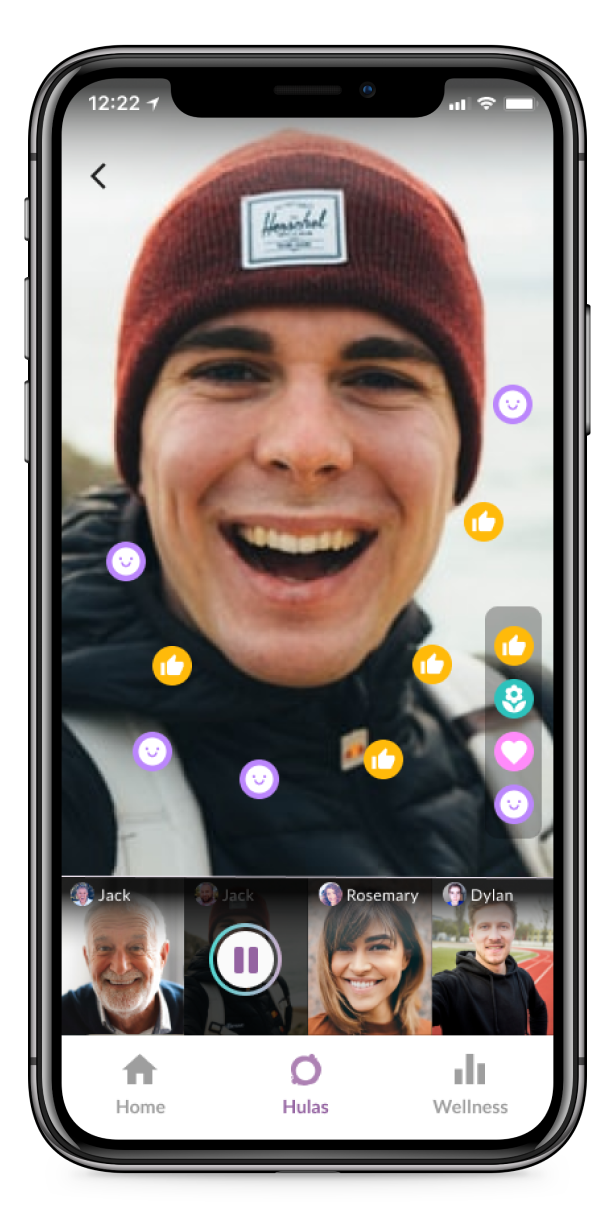
2. Voting on Hulas
From the homepage, users can access each family member’s profile. The profile shows a count of how many videos a user has published, as well as reward badges received from others’ reactions to their videos. According to game design experts, rewards are a very effective way to make users continue to engage with a product.
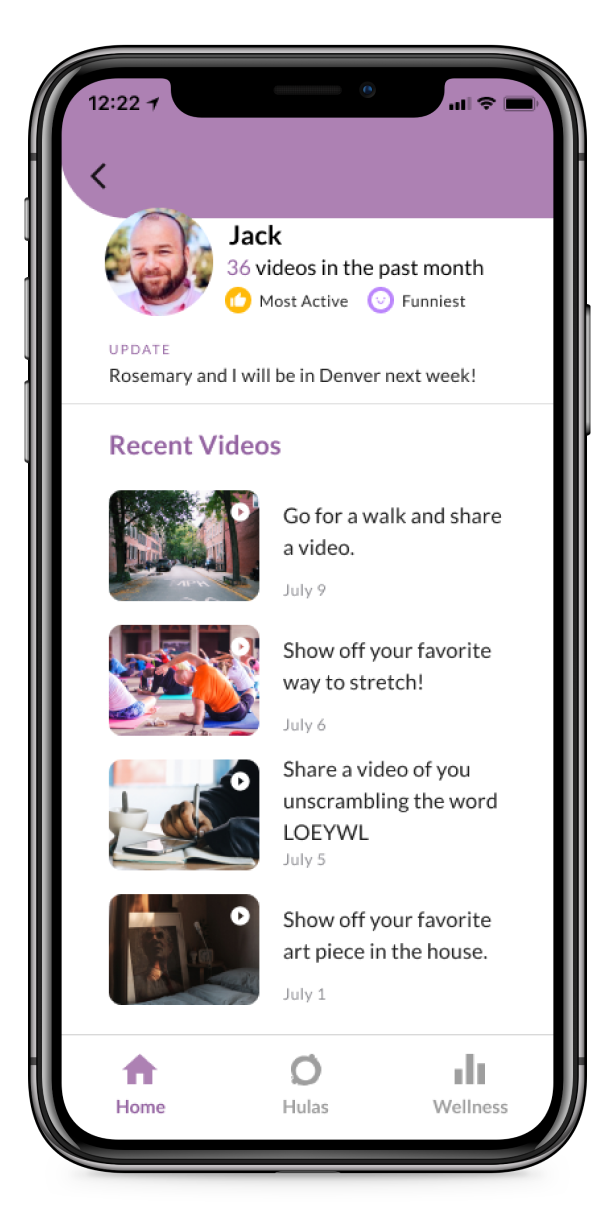
3. Public Profile
The profile page displays a chronological video feed that provides a cohesive view of the Hulas one has completed over time. The purpose of the public profile page is to provide a sense of accomplishment.
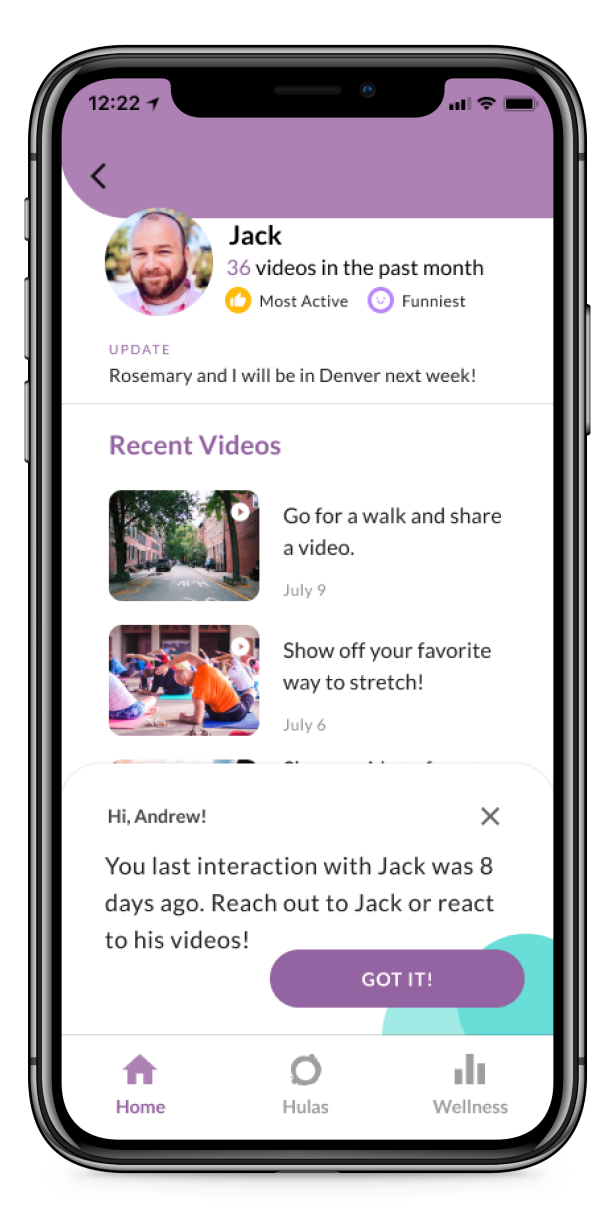
4. Interaction Tracker
When a user visits someone else’s profile page, an in-app notification will pop up to inform the last time the user interacted with the profile owner. We use this to remind family members to stay connected and interact with each other.
The High-fidelity Mobile Prototype

"Hulas” - prompts that all family members respond to in their own short video. Participants record their response, and their family can watch these videos on their own time.
Hula comes with endless challenge ideas in six categories: food, movies & books, brain games, exercise, arts & crafts, and storytelling. Or, write your own meaningful prompt customized to your family!
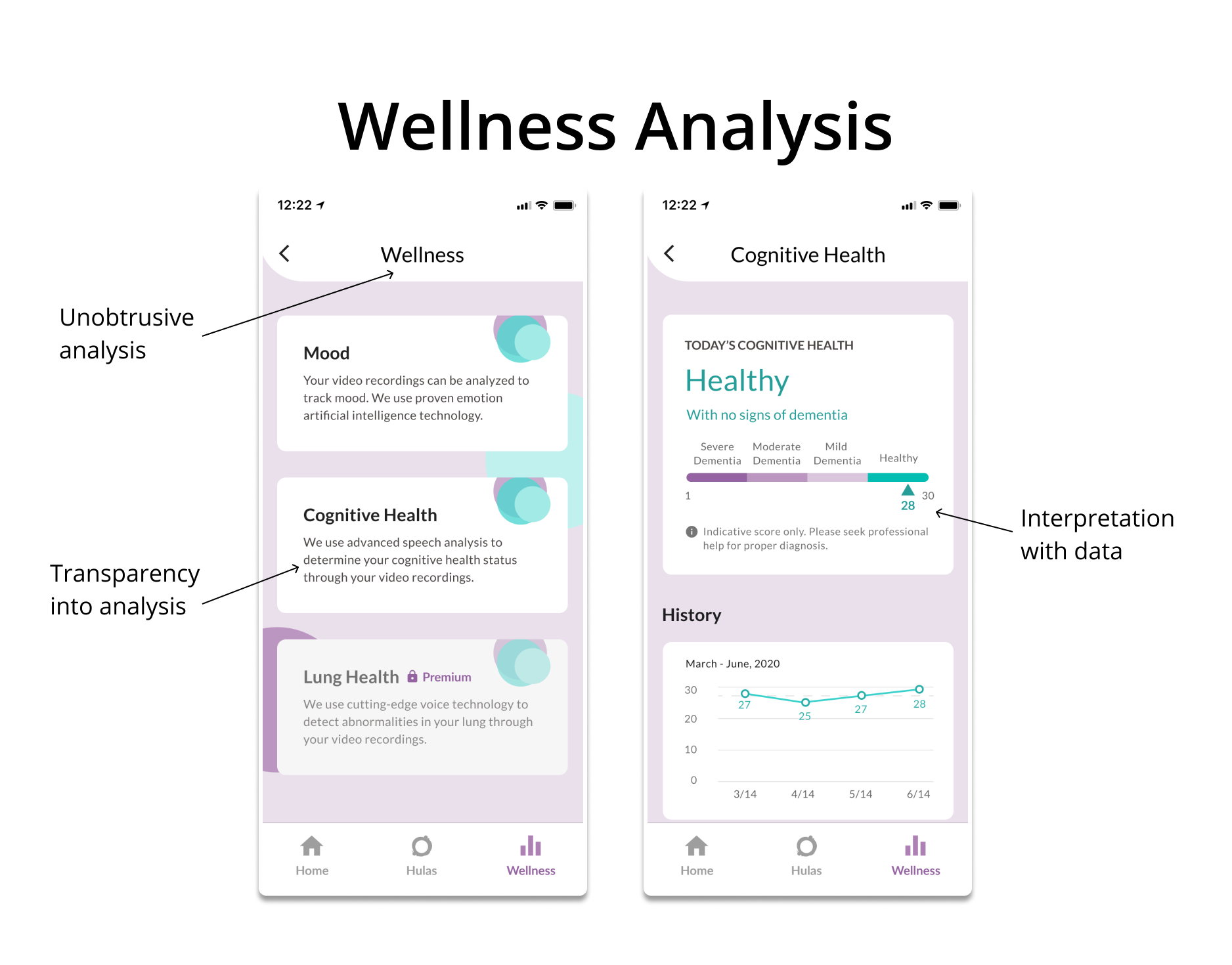
Most medical monitoring solutions are obtrusive, invasive, and require sensors or wearables.
Thanks to clinically-backed technology developed by a host of renowned partners, Hula leverages the capabilities of smartphones to analyze Hula videos for health markers. Analysis is currently available for lung health, cognitive health, emotional state, tremor, and physical pain. Tracked over time, these may help detect and prevent larger issues like high blood pressure, dementia, or congestive heart failure.
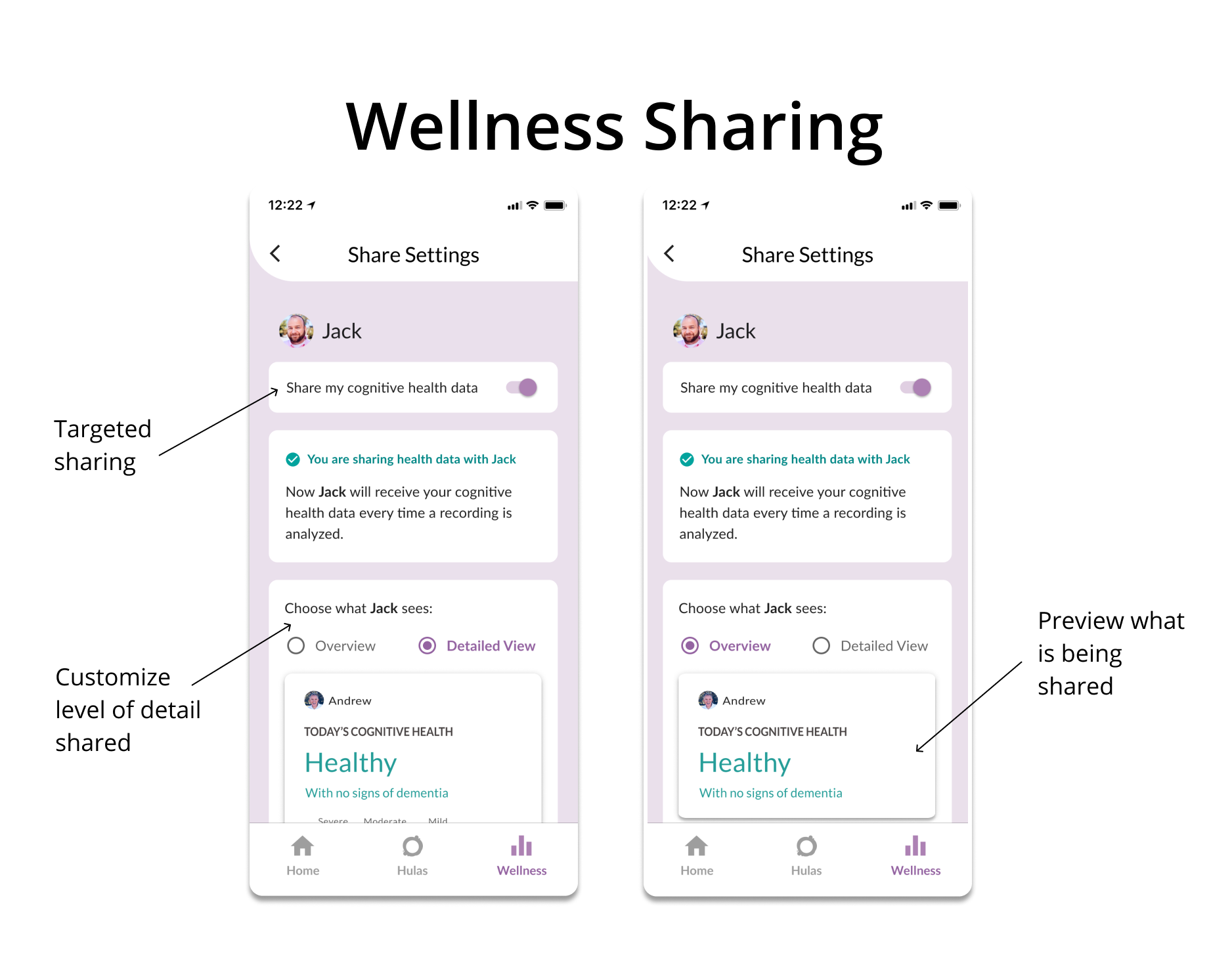
Health can be hard to talk about, but we know it's more important than ever to keep an eye on our loved ones. Individuals are in control of who sees their wellness data, and may approve family members' requests to view.
Hula anonymizes user data, so no one but you and your family will see it.

We had a Virtual Final Pitch to an audience of 90 people.
Including: Nationwide Executives, Nationwide Ventures, Nationwide Innovation, CMU Professors and more!
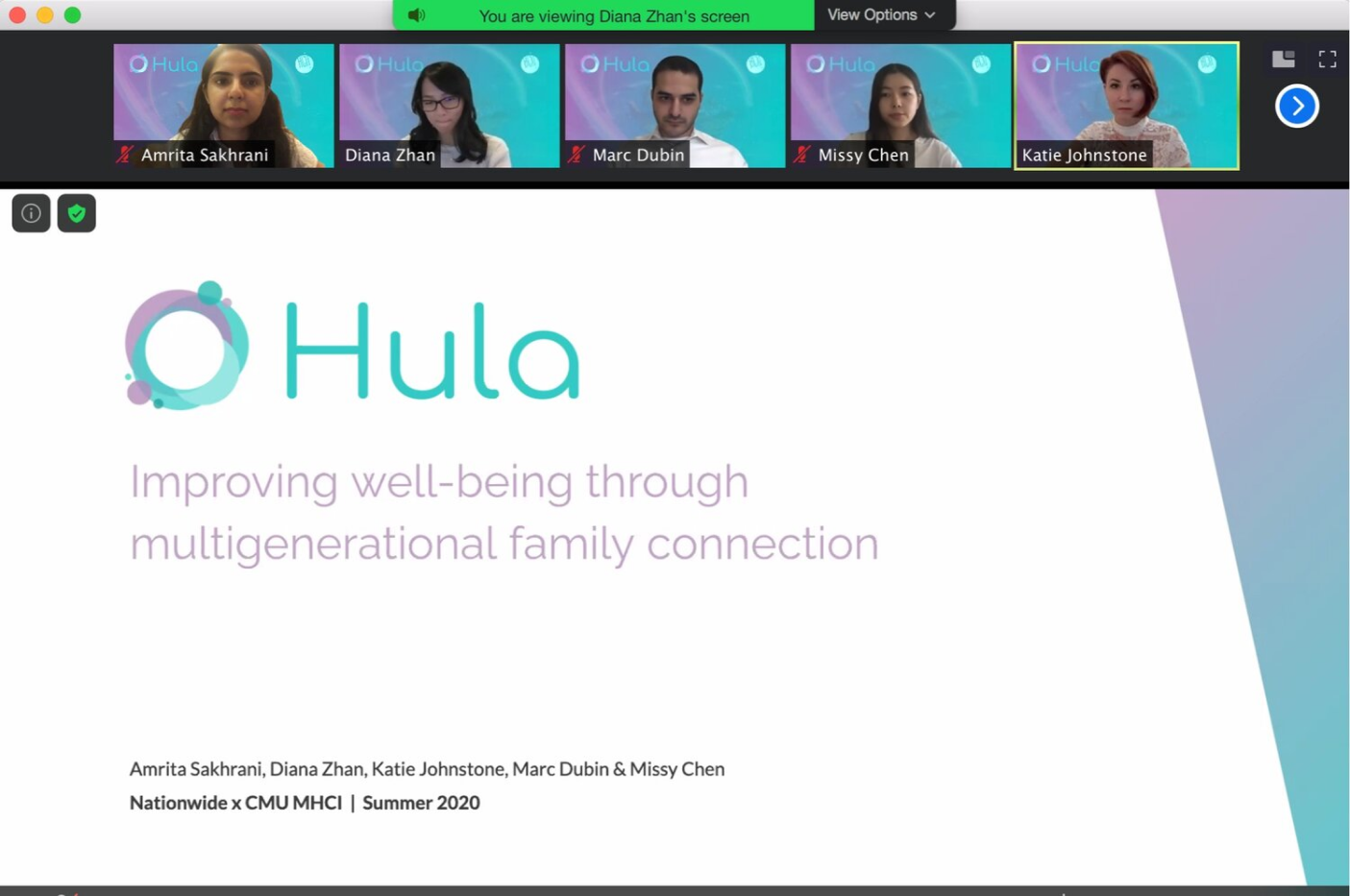
Reflection
At the conclusion of this eight-month long journey, we feel extremely honored to have been part of an initiative that’s innovating the future. The population we focused on, aging adults, tend to be overlooked in technology. We feel fortunate to have listened to their stories, struggles, and wishes, and transformed them into an actionable vision.
Selected Works
